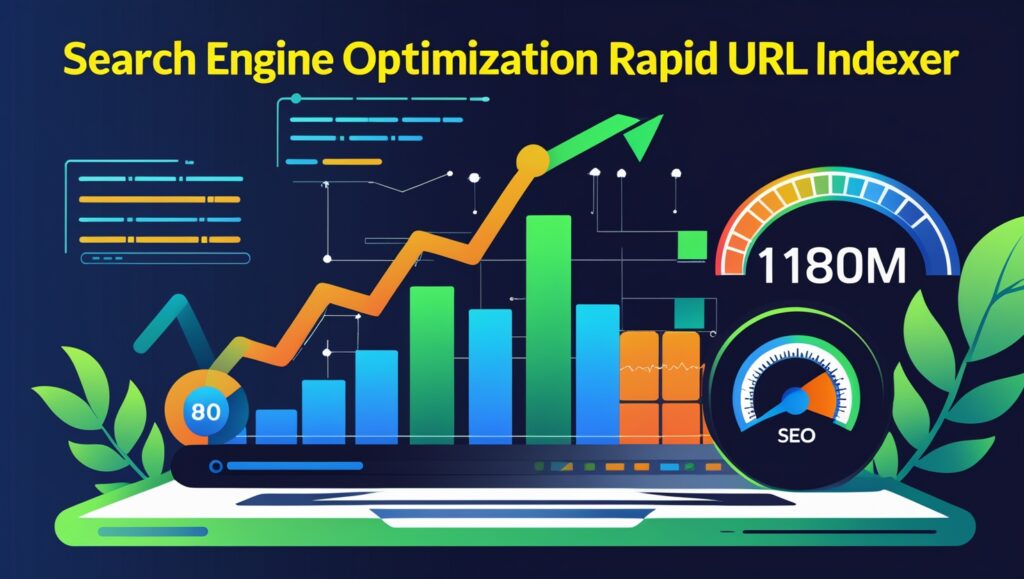
In the fast-paced world of SEO, getting your web pages indexed quickly can make a significant impact on rankings and traffic. A Rapid URL Indexer helps speed up the process, ensuring search engines recognize new content faster. This guide explores rapid indexing tools, their benefits, challenges, and best practices.
1. Introduction to Rapid URL Indexers
A Rapid URL Indexer is an SEO tool designed to help webpages get indexed quickly in search engines like Google. Instead of waiting weeks for natural crawling, these tools expedite the indexing process using various techniques such as API submissions, backlinking, and pinging services.
2. Importance of Fast URL Indexing in SEO
- Faster rankings for new content
- Improved visibility for time-sensitive pages
- Avoids delays in organic search traffic
- Essential for news sites, eCommerce updates, and SEO campaigns
3. Common Indexing Challenges
- Slow Googlebot crawling
- Low domain authority affecting indexability
- Improper use of internal linking
- Technical issues like noindex tags or canonical errors
- Competition with duplicate or similar content
4. Advantages of Using Rapid URL Indexing Tools
- Faster Search Engine Crawling: Indexing new pages within hours or days
- Better SEO Performance: Quicker inclusion in search results leads to early ranking improvements
- Increased Organic Traffic: Rapid visibility attracts users faster
- Ideal for New Websites: Helps fresh domains establish authority quickly
5. Top 9 URL Indexing Tools Comparison
- Google Search Console – Free, reliable, but slow at times
- Rapid Indexer Pro – Best for mass URL submissions
- IndexMeNow – AI-powered indexing tool
- OneHourIndexing – Great for time-sensitive content
- Linklicious – Works well for backlinks and indexing
- Index Inject – Google API-based instant indexing
- Speed Links – Focuses on SEO link indexing
- SEO Autopilot – Automated indexing and backlinking
- Elite Indexer – Suitable for high-volume users
6. Best Practices for Rapid URL Indexing
- Submit URLs manually via Google Search Console
- Use internal linking to improve crawl efficiency
- Implement structured data (schema markup)
- Keep URLs clean and SEO-friendly
- Leverage high-authority backlinks
- Ensure mobile-friendliness and fast loading speeds
7. Effective Strategies for Quick URL Indexing
- Use Google Indexing API for instant indexing of job listings and news content
- Ping search engines using online ping tools
- Create high-quality backlinks from trusted domains
- Regularly update old content to encourage re-indexing
8. Common Pitfalls to Avoid When Indexing URLs
- Submitting low-quality, duplicate content
- Overusing automated indexers (risk of penalties)
- Ignoring technical SEO issues (robots.txt blocking, canonical tags)
- Not checking indexing status in Google Search Console
9. How to Choose the Right Indexer
- Look for Google API integration for instant indexing
- Check user reviews and success rates
- Prioritize indexers that support bulk submissions
- Consider price vs. efficiency
10. The Future of URL Indexing with AI & Automation
With AI and machine learning, search engines are becoming smarter in identifying valuable content. Google’s AI-driven crawling systems will eventually reduce the need for manual indexing, focusing more on content quality and user engagement signals.
11. Conclusion
Using a Rapid URL Indexer is an effective way to get pages indexed quickly, boosting rankings and SEO performance. However, best practices and avoiding common mistakes are essential for sustainable success.
Frequently Asked Questions (FAQs)
1. What is URL indexing, and why is it important for websites?
URL indexing is the process where search engines add a webpage to their database, making it eligible to appear in search results. Without indexing, a page won’t rank or be discoverable by users.
2. How long does it take for a URL to get indexed naturally without using rapid indexers?
Without using rapid indexing tools, it can take a few days to several weeks for search engines to crawl and index a webpage, depending on site authority and content quality.
3. What are the key advantages of using a rapid URL indexing tool?
- Faster search rankings
- Quick inclusion of new content
- Improved organic traffic
- Essential for new websites or urgent content
4. How will artificial intelligence and machine learning shape the future of URL indexing?
AI will enhance Google’s ability to prioritize quality content over artificially indexed pages, making natural indexing more efficient while reducing the need for manual submission.
5. What are the most common mistakes to avoid when using URL indexing tools?
- Using spammy or black-hat indexers
- Submitting thin or duplicate content
- Ignoring technical SEO fundamentals
